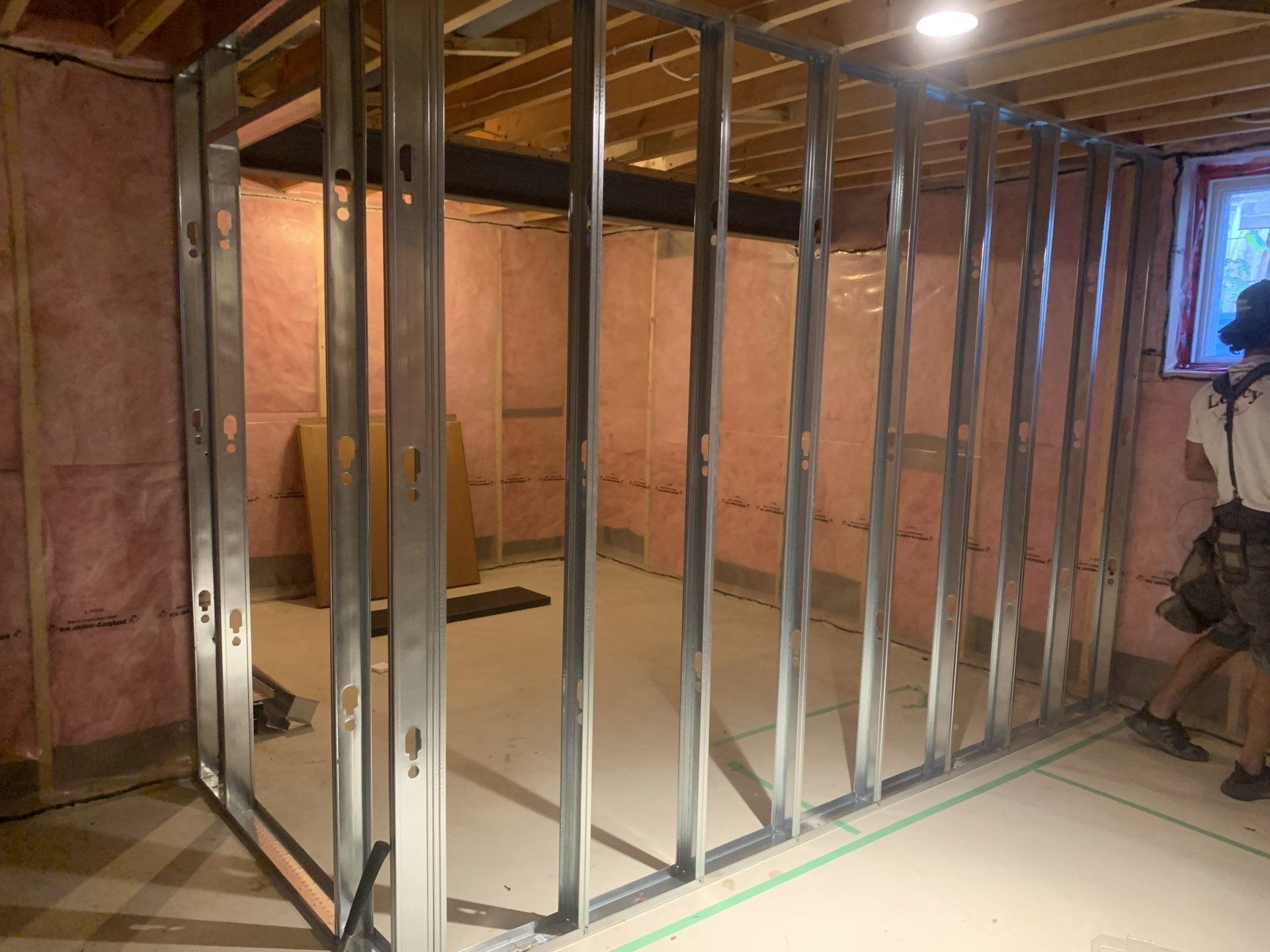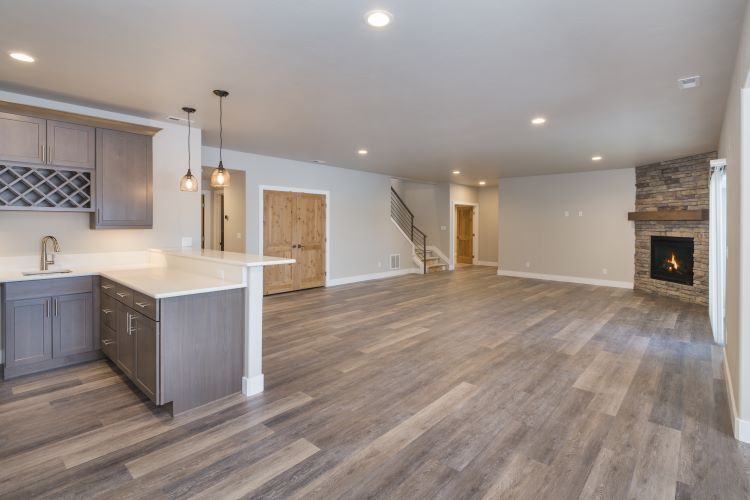Metal vs Wood Framing for Your Basement

When it comes to basement framing, one of the critical decisions you'll need to make is choosing the right framing material. Both metal and wood framing have their advantages and disadvantages, and understanding the differences between them can help you make an informed decision for your basement renovation project. Here, we'll explore the key differences between metal and wood framing:
Wood Framing:
1. Traditional Choice:
Wood framing has been the standard choice for residential construction for many years. It is readily available, easy to work with, and familiar to most contractors.
2. Cost-Effective:
In most cases, wood framing tends to be more cost-effective than metal framing. The materials are generally less expensive, and labor costs may also be lower due to the widespread use of wood framing techniques.
3. Versatility:
Wood framing allows for greater versatility in design and customization. It is easy to cut and shape, making it ideal for creating intricate layouts and architectural details.
4. Insulation Properties:
Wood framing provides better thermal insulation compared to metal framing. Wood has natural insulating properties, helping to regulate indoor temperatures and improve energy efficiency.
5. Moisture Resistance:
While wood framing is susceptible to moisture damage if exposed to water for extended periods, pressure-treated lumber or moisture-resistant coatings can help mitigate this risk.
Metal Framing:
1. Strength and Durability:
Metal framing offers superior strength and durability compared to wood framing. It is resistant to warping, rotting, and termite damage, making it ideal for environments prone to moisture and humidity, such as basements.
2. Fire Resistance:
Metal framing is non-combustible, providing greater fire resistance compared to wood framing. This can be a crucial consideration for basement renovations where fire safety is a concern.
3. Consistency and Precision:
Metal framing components are manufactured to precise specifications, resulting in consistent dimensions and straighter walls. This can lead to faster installation and a more uniform finished product.
4. Space Savings:
Metal framing members are thinner and lighter than wood studs, allowing for greater use of interior space. This can be advantageous in smaller basements where maximizing square footage is essential.
5. Environmental Considerations:
Metal framing is typically made from recycled steel, making it a more environmentally friendly option compared to wood framing, which requires the harvesting of trees.
Conclusion:
Both metal and wood framing have their unique advantages and considerations. The choice between the two will depend on factors such as budget, design preferences, environmental conditions, and local building codes. At Basement Renovations London, we offer expertise in both metal and wood framing techniques, ensuring that your basement renovation project is completed to the highest standards of quality and craftsmanship. Contact us today to learn more about our framing services and how we can help bring your basement vision to life.
You might also like




